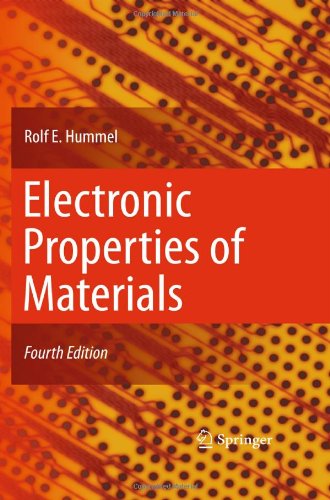

Most ebook files are in PDF format, so you can easily read them using various software such as Foxit Reader or directly on the Google Chrome browser.
Some ebook files are released by publishers in other formats such as .awz, .mobi, .epub, .fb2, etc. You may need to install specific software to read these formats on mobile/PC, such as Calibre.
Please read the tutorial at this link: https://ebookbell.com/faq
We offer FREE conversion to the popular formats you request; however, this may take some time. Therefore, right after payment, please email us, and we will try to provide the service as quickly as possible.
For some exceptional file formats or broken links (if any), please refrain from opening any disputes. Instead, email us first, and we will try to assist within a maximum of 6 hours.
EbookBell Team

5.0
90 reviewsThis book on electrical, optical, magnetic, and thermal properties of materials differs from other introductory texts in solid-state physics. First, it is written for engineers, particularly materials and electrical engineers, who what to gain a fundamental understanding of semiconductor devices, magnetic materials, lasers, alloys, and so forth. Second, it stresses concepts rather than mathematical formalism, which should make the presentation relatively easy to read. Third, it is not an encyclopedia: The topics are restricted to material considered to be essential and that can be covered in one 15-week semester.
The book is divided into five parts. The first part, "Fundamentals of Electron Theory," introduces the essential quantum mechanical concepts needed for understanding materials science; the other parts may be read independently of each other. Many practical applications are discussed to provide students with an understanding of electronic devices currently in use. The solutions to the numerical problems are given in the appendix.
Previous editions have been well received by students and teachers alike. This Fourth Edition has again been thoroughly revised and brought up to date to take into account the explosive developments in electrical, optical, and magnetic materials and devices. Specifically, new topics have been added in the "applied sections," such as energy saving light sources, particularly compact fluorescence light fixtures, organic light-emitting diodes (OLEDs), organic photovoltaics (OPV cells), optical fibers, pyroelectricity, phase-change memories, blue ray disks, holographic versatile disks, galvanoelectric phenomena (emphasizing the entire spectrum of primary and rechargeable batteries), graphene, quantum Hall effect, iron-based semiconductors (pnictides), etc. to mention just a few subjects.